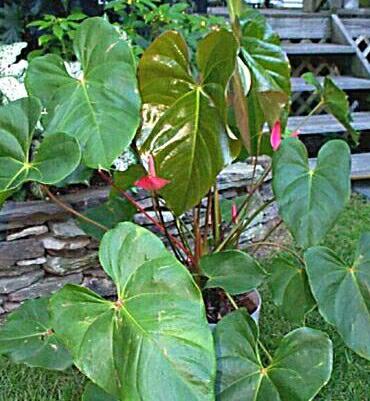

It flowers consistently and has been virtually indestructible compared to so many other Anthurium. Despite drought (I forget to water), bugs (spider mite world wars as well as mealy bug), too little light (my unlit drafty basement for 6 weeks during construction) cold (why can't I take it out during Long Island's April?) the plant appears to recover any insult I can hurl at it. In all honesty I did manage to kill one once. I left it out and the overnight temperature was in the low 20s. I can't guarantee this but highly suspect that freezing solid is not good for an Anthurium.
In 2002 I submitted the plant to a tissue culture firm in Florida. It was slow going at first but they did manage to establish a culture and have distributed the plant under the name Anthurium "Oaxaca". One specimen in their greenhouse is approximately 6 feet high with inflorescences 6-8 inches in height.
In early 2008, it was available for sale on Ebay. Friends in Florida have successfully grown it as a landscape plant. During the 2008-09 winter, Sarasota temperatures dropped to 29°F one night. The Anthurium andreanum in that yard were showing frost damage. The two "Oaxaca" in my friend's yard survived unscathed.
In 2009, I finally learned the probable heritage of this plant. The email from a Central American Anthurium expert said "This looks exactly like the many local backyard hybrids between native white-flowered spp. from Sect. Calomystrium such as A. huxtlense and A. armeniense and the old F1 hybrids between andraeanum and nymphaeipholium, etc. that dominate the cut flower trade as 'andraeanum'. They are readily available in local nurseries across southern México and Central America."
These photos are a bit grainy having been taken with a nearly first generation digital camera back in 1999.
click the images for close-ups of the flower.